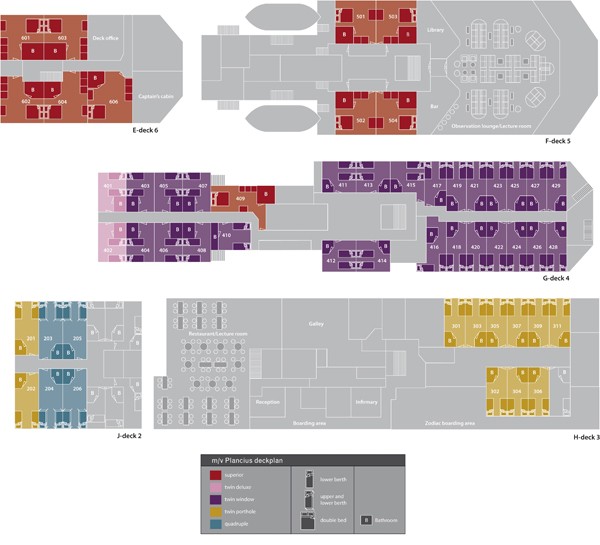
This expedition focuses on the versatility of north Spitsbergen's visually stunning landscapes, vast spans of sea ice, and the many opportunities to spot wildlife like whales, polar bears, seabirds, and walruses.
- Raudfjord
- Hamiltonbukta
- Ytre Norskøya
- Forlandsundet, St. Johns Fjord, or Alkhornet
Prices quoted here are often dependent on currency fluctuations. Please check with (01432 507450 or info@small-cruise-ships.com) for the very latest price, which may well be cheaper than the one advertised here.
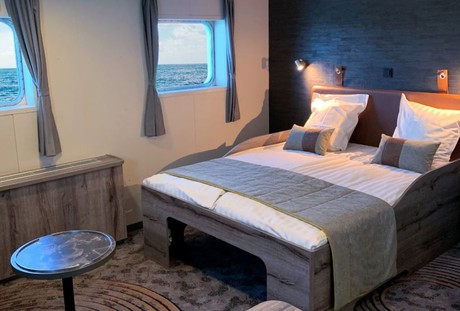
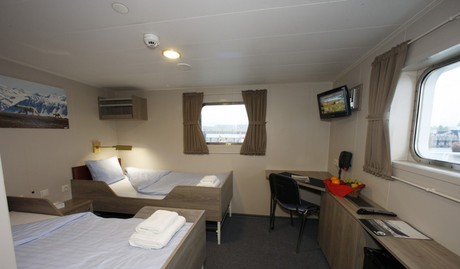
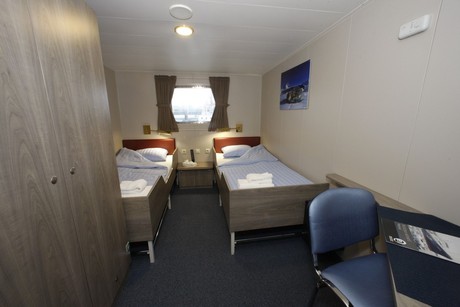
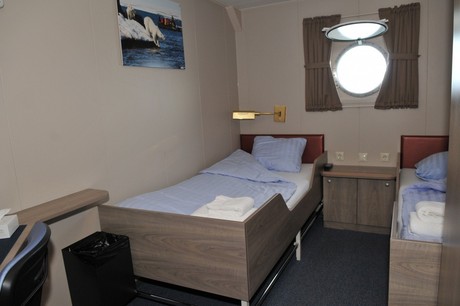
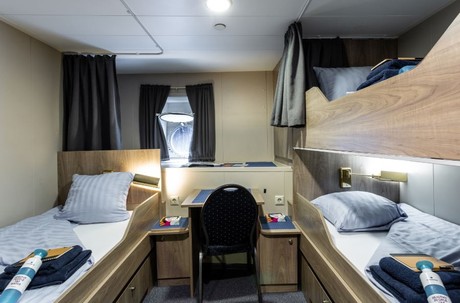
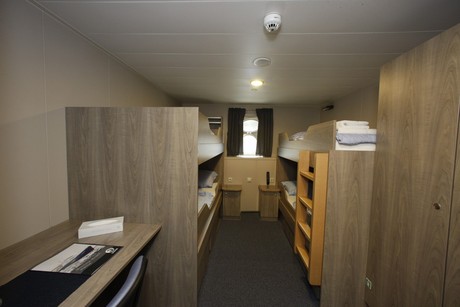
You touch down in Longyearbyen, the administrative center of Spitsbergen, the largest island of the Svalbard archipelago. Enjoy strolling around this former mining town, whose parish church and Svalbard Museum make for fascinating attractions. Though the countryside appears stark, more than a hundred species of plant have been recorded in it. In the early evening the ship sails out of Isfjorden, where you might spot the first minke whale of your voyage.
This voyage will take you into the pack ice and along the remote shorelines of rugged north Spitsbergen. Our landings are subject to change due to sea ice, weather conditions, and wildlife sightings. The expedition leader determines the final plan. Places you might visit include:
Raudfjord
On the north coast of Spitsbergen, you can enjoy this expansive fjord spilling with glaciers – and maybe even visited by ringed and bearded seals. The cliffs and shoreline also support thriving seabird colonies, rich vegetation, and the possibility of polar bears.
Hamiltonbukta
Here we can see an impressive colony of Brünnich’s guillemots.
Ytre Norskøya
This small island was used for many years as a lookout point for Dutch whalers, and in fact we can still follow their tracks to the summit of the island. The remains of 17th-century blubber ovens can also be seen near about 200 graves. The north side of the island offers the rare opportunity to see puffins near their breeding places, and there is even a small colony of kittiwakes.
Monaco Glacier
Depending on the weather and sea ice, you could sail into Liefdefjorden and cruise within sight of the 5-kilometer-long (3.1 miles) face of Monaco Glacier. The waters in front of this precipitous glacier are a favorite feeding spot for thousands of kittiwakes, and the base of the ice is a popular polar bear hunting ground. If ice conditions prevent us from sailing here early in the season, we can implement an alternate route along the west coast of Spitsbergen.
Northwest of Raudfjord
We aim to sail into the pack ice outside the territorial waters of Svalbard, watching for polar bears and elusive Greenland (bowhead) whales. As we sail from 80 N to 76 N along and in the outer fringes of the ice edge, we will also look for harp seals, hooded seals, polar bears, and migrating seabirds like little auks, Brünnich’s guillemots, and kittiwakes. On previous voyages in this area, we have sometimes seen up to hundred bowhead whales. We also have the chance to see northern bottlenose whales and the first fin whales of the season. The pack ice sailing will be a highlight of this voyage and may take up to three days.
Forlandsundet, St. Johns Fjord, or Alkhornet
Walruses sometimes haul out in Forlandsundet. Alternatively, we might sail into St. Johns Fjord or south to the mouth of Isfjorden, landing at Alkhornet. Seabirds nest on these cliffs, Arctic foxes search below for fallen eggs and chicks, and reindeer graze the sparse vegetation.
The vessel will arrive back in Longyearbyen in the early morning. Bus transportation to the airport will be provided.
All itineraries are for guidance only. Programs may vary depending on ice, weather, and wildlife conditions. Landings are subject to site availabilities, permissions, and environmental concerns per AECO regulations. Official sailing plans and landing slots are scheduled with AECO prior to the start of the season, but the expedition leader determines the final plan. Flexibility is paramount for expedition cruises. The average cruising speed of our vessel is 10.5 knots.
Plancius
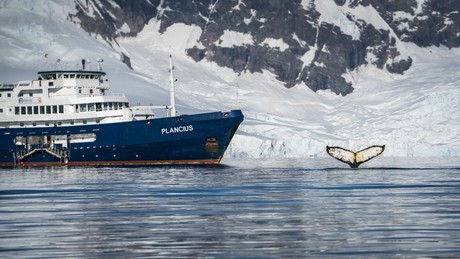
| Length | 89 metres |
|---|---|
| Speed | 10-12 knots |
| Crew | 37 |
| Expedition staff | 8 |
| Doctor | 1 on board |
M/V "Plancius" was built in 1976 as an oceanographic research vessel for the Royal Dutch Navy and was named "Hr. Ms. Tydeman". The ship sailed for the Dutch Navy until June 2004 when she was converted into an expedition cruise ship..The vessel was completely rebuilt as a 114-passenger vessel in 2009 and complies with the latest SOLAS-regulations (Safety Of Life At Sea). M/v "Plancius" is classed by Lloyd's Register in London and flies the Dutch flag.
"Plancius" accommodates 114 passengers in 53 passenger cabins with private toilet and shower in 4 quadruple private cabins, 39 twin private cabins (ca. 15 square meters) and 10 twin superior cabins (ca. 21 square meters).All cabins offer lower berths (either two single beds or one queen-size bed), except for the 4 quadruple cabins (for 4 persons in 2x upper and lower beds).The vessel offers a restaurant/lecture room on deck 3 and a spacious observation lounge (with bar) on deck 5 with large windows, offering full panorama view.
Plancius has large open deck spaces (with full walk-around possibilities on deck 3), giving excellent opportunities to enjoy the scenery and wildlife. She is furthermore equipped with 10 Mark V zodiacs, including 40 HP 4-stroke outboard engines and 2 gangways on the starboard side, guaranteeing a swift zodiac operation.M/v "Plancius" is comfortable and nicely decorated, but is not a luxury vessel. Our voyages in the Arctic and Antarctic regions are and will still be primarily defined by an exploratory educational travel programme, spending as much time ashore as possible.
The vessel is equipped with a diesel-electric propulsion system which reduces the noise and vibration of the engines considerably. The 3 diesel engines generate 1.230 horse-power each, giving the vessel a speed of 10 - 12 knots. The vessel is ice-strengthened and was specially built for oceanographic voyages.M/v "Plancius" is manned by 17 nautical crew, 19 hotel staff (6 chefs, 1 hotel manager, 1 steward-barman and 11 stewards / cabin cleaners), 8 expedition staff (1 expedition leader and 7 guides-lecturers) and 1 doctor.
Ice class: Plancius was built for Ice conditions. To reach these ice-conditions she has a strengthened bow and stern. The hull is thicker and the whole construction on the waterline of the vessel is reinforced by using extra frames. Where the normal frame spacing is 65cm, we have on the bow-line and stern also frames in between so there the frame spacing is approx 30cm. Because Plancius was built to do surveys she has a special six blade bronze propeller, the shape of the propeller makes Plancius a very silent ship. Plancius has a Lloyds class notation 100A1 Passenger ship, Ice Class 1D at a draught of 5 meters (which is our waterline).Vessel Type: Expedition
